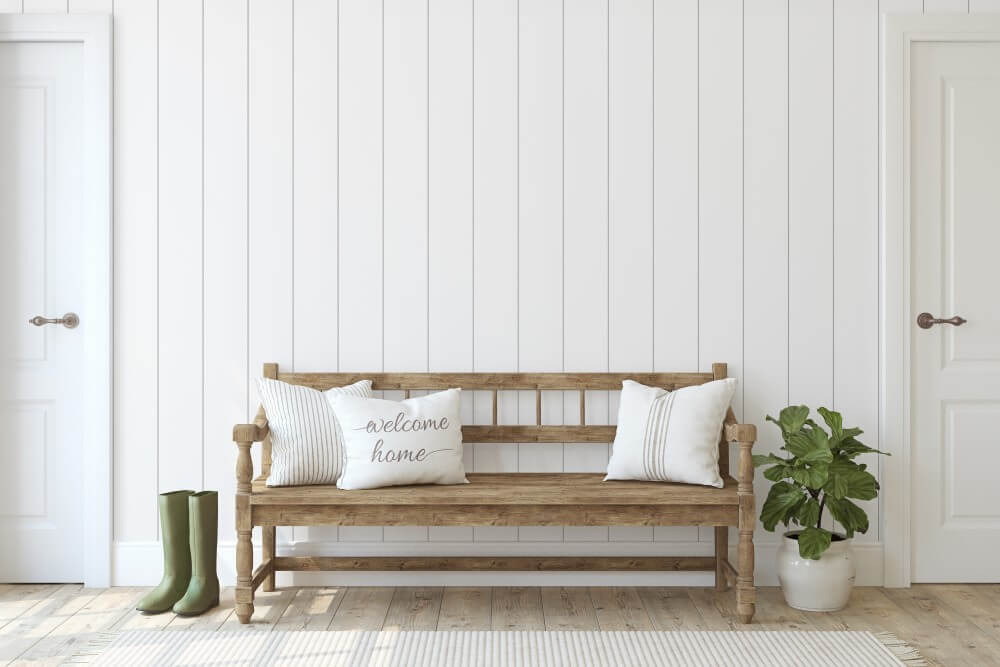https://www.ninthandvine.com/a/blog/unconventional-wall-panel-usage-study-headboard-staircaseIn part one of this two-part blog series, we went over some basics on performing a DIY installation of wall panels in your home. This process is very simple and straightforward and can even easily be carried out by those without any training or experience in this area.
At Ninth & Vine, we’re here to provide both a wide variety of wall panels, from faux brick panels to wood, shiplap, and many others, and also assistance with DIY installation of any of our products. While installation is not hard to perform, it’s good to have a basic set of standards or instructions to guide you and ensure you don’t miss any important steps. Today’s part two of our series will go over the final steps for DIY wall panel installation.
Adhesive Type
Firstly, you have several options for which adhesive format you use to hold wall panels on your walls. These include:
- Peel-and-stick tape: This is the most common and recommended adhesive option across most wall panel types. Our peel-and-stick tape is very strong. Be sure to test fit each plank before you remove the protective backing. Use a J-roller to activate the adhesive.
- Construction adhesive: For those who want an even tighter and more durable fit, you might use high-grade construction adhesive.
- Nail gun or finishing nails: These are also an option for those who are installing panels over materials that don’t do well with adhesives.
In some cases, you’ll use more than one – tape or adhesive for initial securing, then nails after to finalize this. If you have questions or need further installation guidance, call our team at Ninth & Vine.
Basic Attachments
Once you have your adhesive selected, it’s time to begin attaching your panels. We generally recommend starting with your bottom piece of wood, which you line up with your markings and press into the wall, then secure using your chosen adhesive. From here, you can attach various additional panels and side pieces, lining up with your previous markings and using the same process.
Be aware that the adhesive tape is very strong. Before you remove the protective backing for final installation, be sure to test fit each plank as you go to assure proper fit. After test fitting, remove the tape backing and apply to the wall. Put the piece at an angle with only the bottom edge touching the wall before fully applying it to the wall. This will assure good positioning prior to the adhesive sticking to the wall.
Installing Around Electrical Outlets and Switches
Be sure to turn off the power at your breaker before handling any electrical outlets or switches. Once the outlet cover is removed, dry fit your plank and mark the position of the outlet box with a pencil. Using a jig saw or keyhole saw, make the cuts where you placed your marks. Loosen the outlet screws and slide the plank into place. The metal tabs on the outlet should sit on top of the plank. Now tighten the screws and replace the cover.
No Painting Necessary
Many of our products come pre-finished and do not require painting or any color addition. That means, you don’t need to worry about the mess of primers and paints to complete your wall panel project. If you like, you can finish edges with a wood or metal square and corners can be finished with a square edge trim or corner trim.
Go to our online panel installation guide to see our full DIY installation instructions.


